How Do You Grow Tomatoes From Seed?
This can be a difficult question to answer for gardeners because of complex factors like temperature, lighting, watering, soil needs, and even the length of the growing season.
This article will help solve this problem with 5 EASY Steps for growing tomatoes from seed indoors.
And I recommend scrolling to the bottom of this page to find answers to the 6 most frequently asked questions most gardeners have when growing tomatoes from seed.
Step #1: Start Tomato Seeds Indoors
You should start your tomato seeds indoors 8 weeks before the last frost to help minimize the risk of weather, pests, and disease.
- Begin by taking a 3 inch Peat Pot and fill it up to approximately 80% full with Seed Starting Mix. Seed starting mix will provide your tomato seeds with the nutrients it needs for the best growth.
- Place your gardening pot into a tray. This will make it easy to move your pots from indoors to your garden and will prevent a mess that can happen from spilled dirty or water that may overflow.
- Next, spray your soil 5 to 8 times with a spray bottle. You will want the soil to be moist, not damp. Moisture promotes seed germination, but damp soil can cause unwanted fungus.
- Then take 2 to 3 tomato seeds, plant them 1/8 inch deep (size of a pencil tip) and gently brush the soil over them.
- Then spray again 5 to 8 times until the soil turns a darker shade of brown.
Related: Here is the BEST Time to Start Tomato Seeds Indoors
Step #2: Provide the Right Amount of Heat, Light, & Water
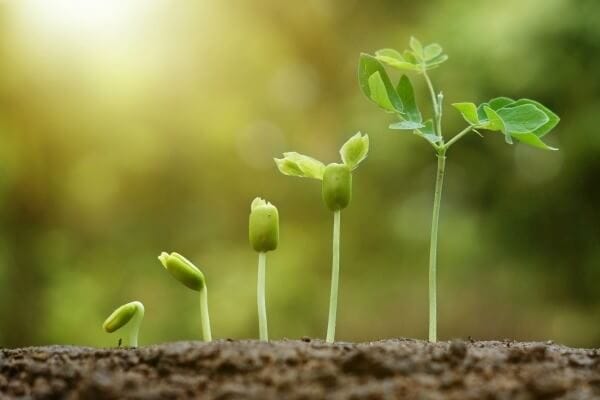
Once you initially sow your tomato seeds, you then have to provide the right amount of heat, light, and water for 8 straight weeks for your seeds to germinate and plant to grow.
- You should provide your tomato seeds 8 hours of light a day by placing it by a sunny window or under a Grow Light (4 inches away from the light) if your windows do not receive enough sunlight. Continue providing 8 hours of sunlight until you transplant your tomato seedlings into a vegetable garden.
- Then spray your soil twice a day for approximately 10 days until your seeds germinate or pop through the soil. Continue spraying twice until your tomato plant is 3 inches tall (this may take another 2 weeks).
- You will also want to keep the room temperature between 65 – 70 degrees Fahrenheit so that your seeds can turn into plants. If you don’t have an area that will stay that warm, a Heat Mat is a great alternative.
Step #3: Transplant your Tomato Seedlings into a Larger Pot (Indoors)!
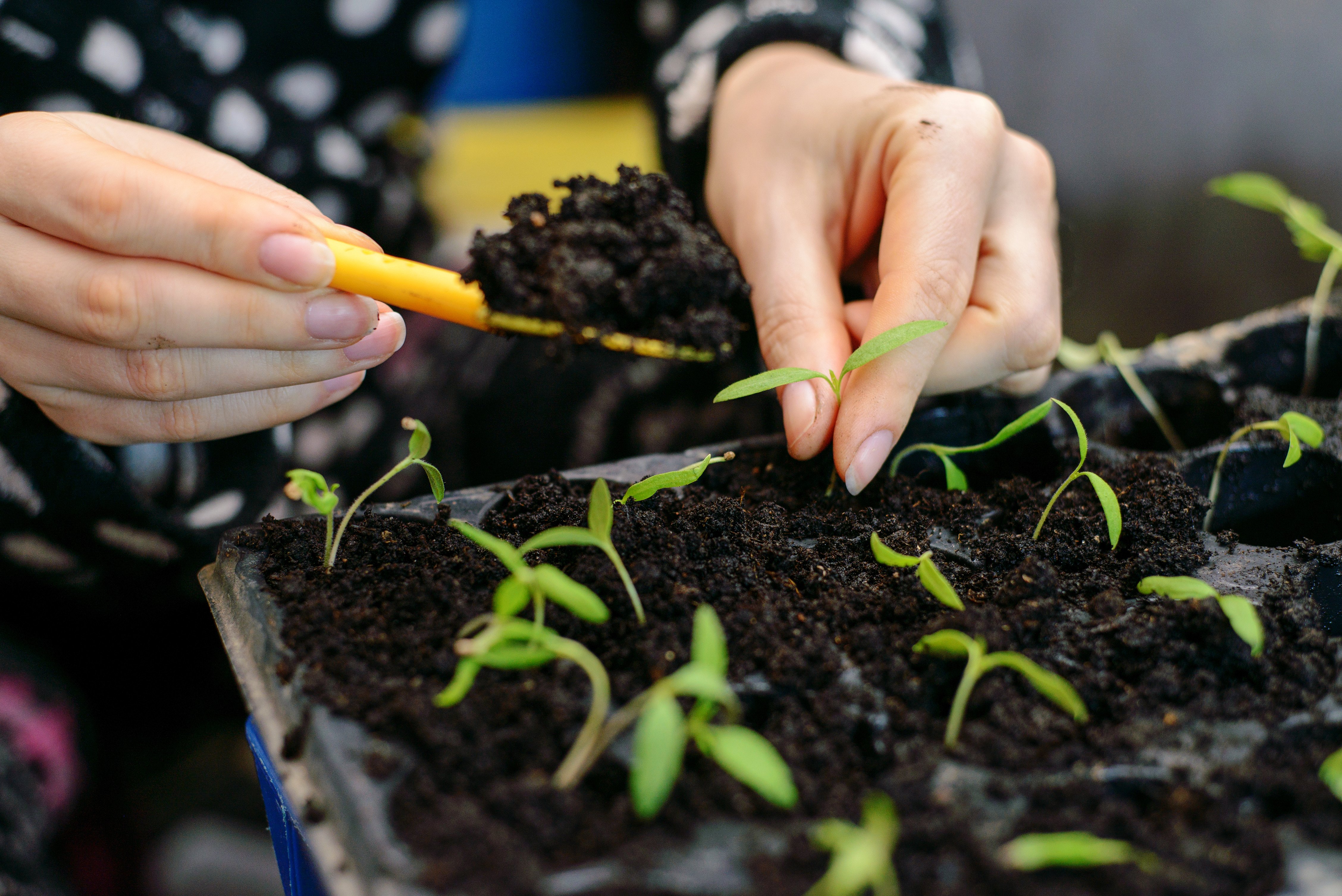
Once your tomato seedlings reach about 3 inches tall you will need to transplant them into a larger pot.
- Before transplanting, you need to take scissors and snip the smallest plants right at the soil line. This will allow the healthier tomato plant to grow to its full potential.
- Next, take a 5 gallon pot, fill it 80% full with potting mix and then dig a hole 3 inches deep (the size of your tomato plant).
- Then place it in your 5 gallon pot and fill it with soil. The soil should go no higher than the base of the tomato plant (where the plant meets the roots).
- Spray the soil 5 to 10 times until the soil turns dark.
- Leave your tomato plant in this pot and continue to spray it once a day (for 5 to 10 times) until the last chance of frost. Also, continue to keep it in sunlight for 8 hours a day and at temperatures of 65- 70 degrees fahrenheit.
Step #4: Introduce your Tomatoes Outdoors
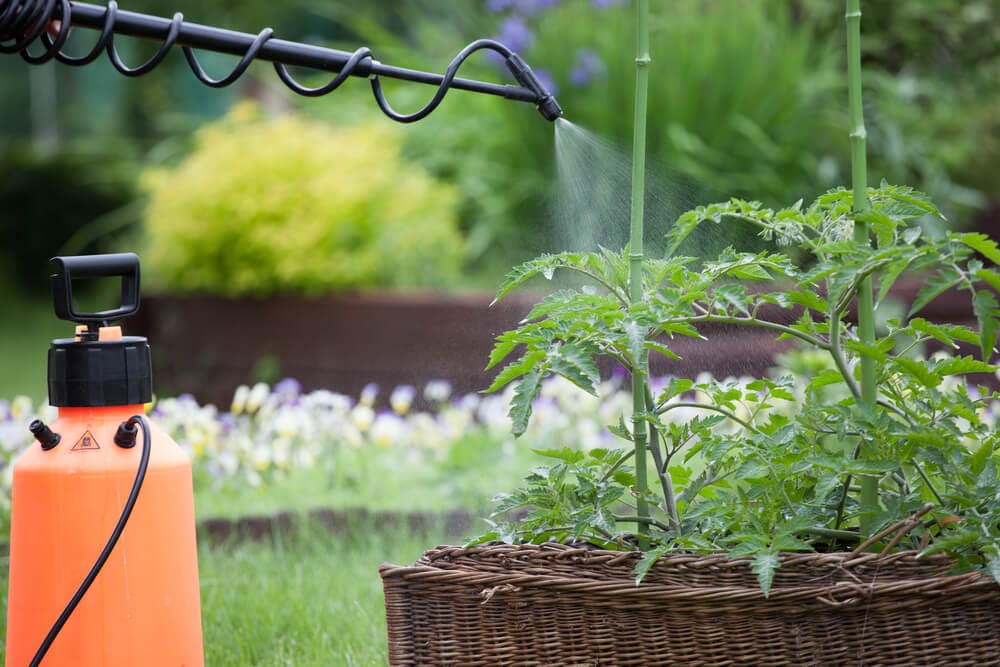
Introducing your tomatoes outdoors is what most beginner gardeners miss, but it is critical to your success.
- For about two weeks, you will want to slowly introduce your tomatoes outside.
- On the first day, you will want to place your tomatoes outside (in pots) for approximatley 2 hours. Each day thereafter, place the tomatoes outside for an additional hour until you build up to 6 straight hours. Don’t forget to bring your tomatoes inside if there is a frost or if there is poor weather like strong winds that can destroy your plant.
Step #5: Transplant Tomato Plants into a Vegetable Garden
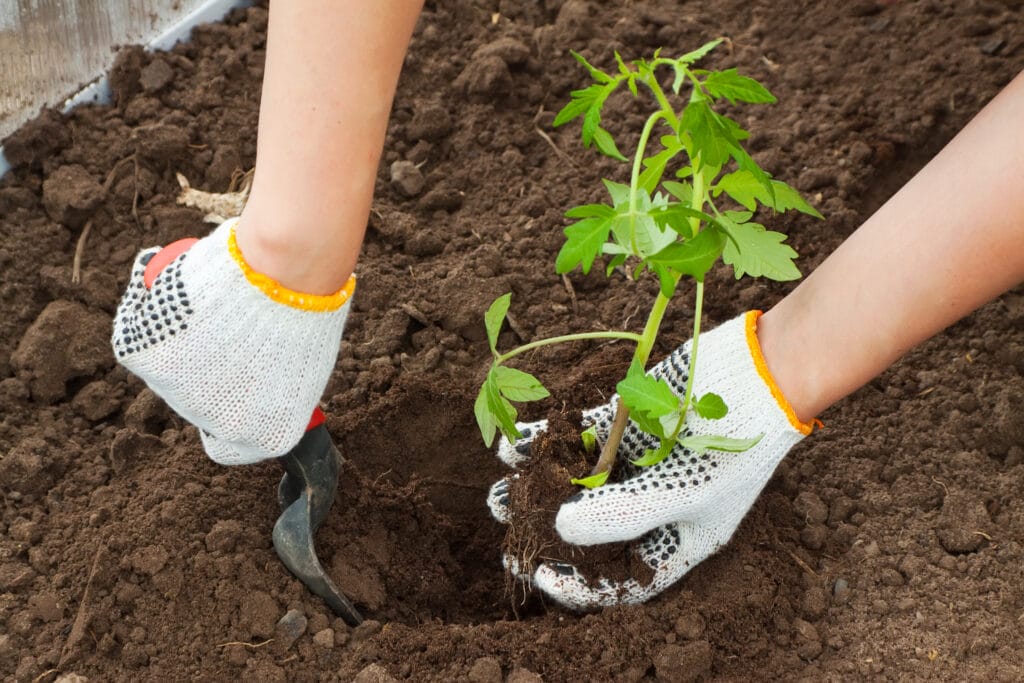
Once the last frost of the year has happened you can transplant your Tomates outside. Never do it before because you risk your plant quickly dying.
- About 1 month before you plan on transplanting your tomatoes into a garden, dig holes in an area that will receive at least 8 hours of light. Dig the hole about 8 inches deep and fill it 30% full with compost. Space the holes 12 – 18 inches apart to promote full growth.
- After the last frost transplant your tomatoes into the garden by simply turning over your gardening pot, pinching the bottom of the pot, and slowly pulling your plant out. Place your tomato plant into the hole and fill it with garden soil (to where the soil meets the base of the plant). It is also beneficial to add a 6 inch layer of mulch around your plant.
- Immediately after you transplant your tomatoes outside add Plant Food and water the soil for about 30 seconds.
- Finally, water your tomatoes once a day for about 30 seconds in the morning or evening to minimize the chance of evaporation. Continue doing this every day until you harvest your tomatoes mid-summer.
Related: Here is the BEST Time to Harvest Tomatoes
Frequently Asked Questions (6 Questions)
#1. What type of Tomato Variety Seeds should I use?
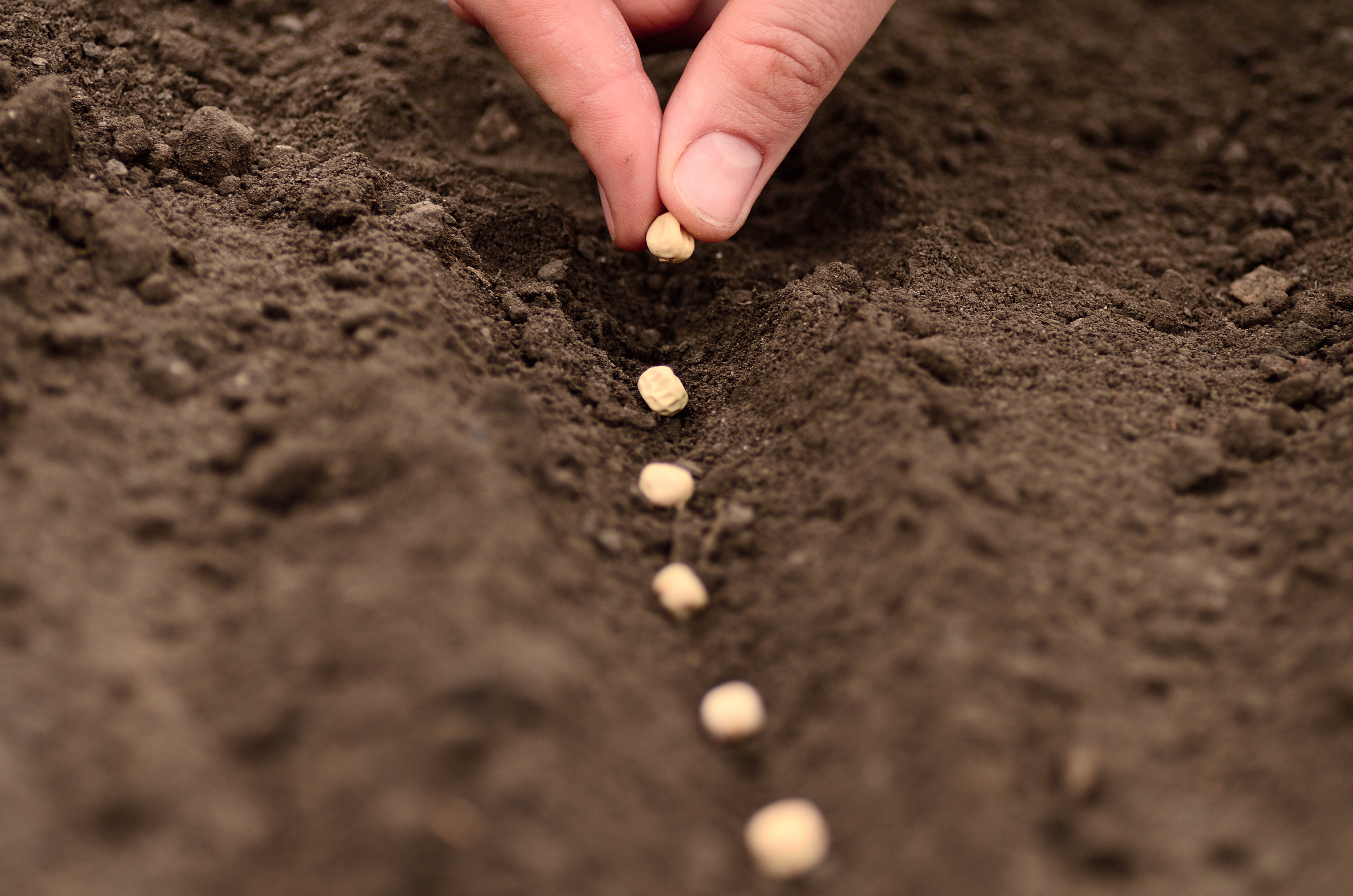
There are four types of seeds that can be used to grow tomatoes; heirloom, organic, hybrid, and GMO.
I recommend using heirloom or hybrid tomato seeds. Gardeners do not have access to GMO seeds and organic seeds are a marketing term and not truly a type of seed.
A. Heirloom Tomatoes
- Heirloom tomato seeds contain tomatoes’ original traits, meaning it will produce some of the most beautiful and best tasting tomatoes out there.
- The downside of this type of seed is that it is the costliest (due to its rarity). In addition, expect the least amount of yield from this type of seed due to the susception of disease and other elements.
B. Hybrid Tomatoes
- Hybrid tomato seeds were made by combining the genes of the same group of plants. This is not a bad thing. The goal with hybrids is to produce a plant that contains the best features of both parent plants.
- This type of seed is what most gardeners use when learnings how to grow tomatoes from seed and is critical if you want the most resistant plant against mother nature’s elements, insects, and diseases or want the most yield.
#2. What are the BEST Tomatoes to Grow from Seed?
While there are hundreds of varieties of tomatoes you can grow, I am recommending 7 types to choose from.
A) Beefsteak Tomatoes
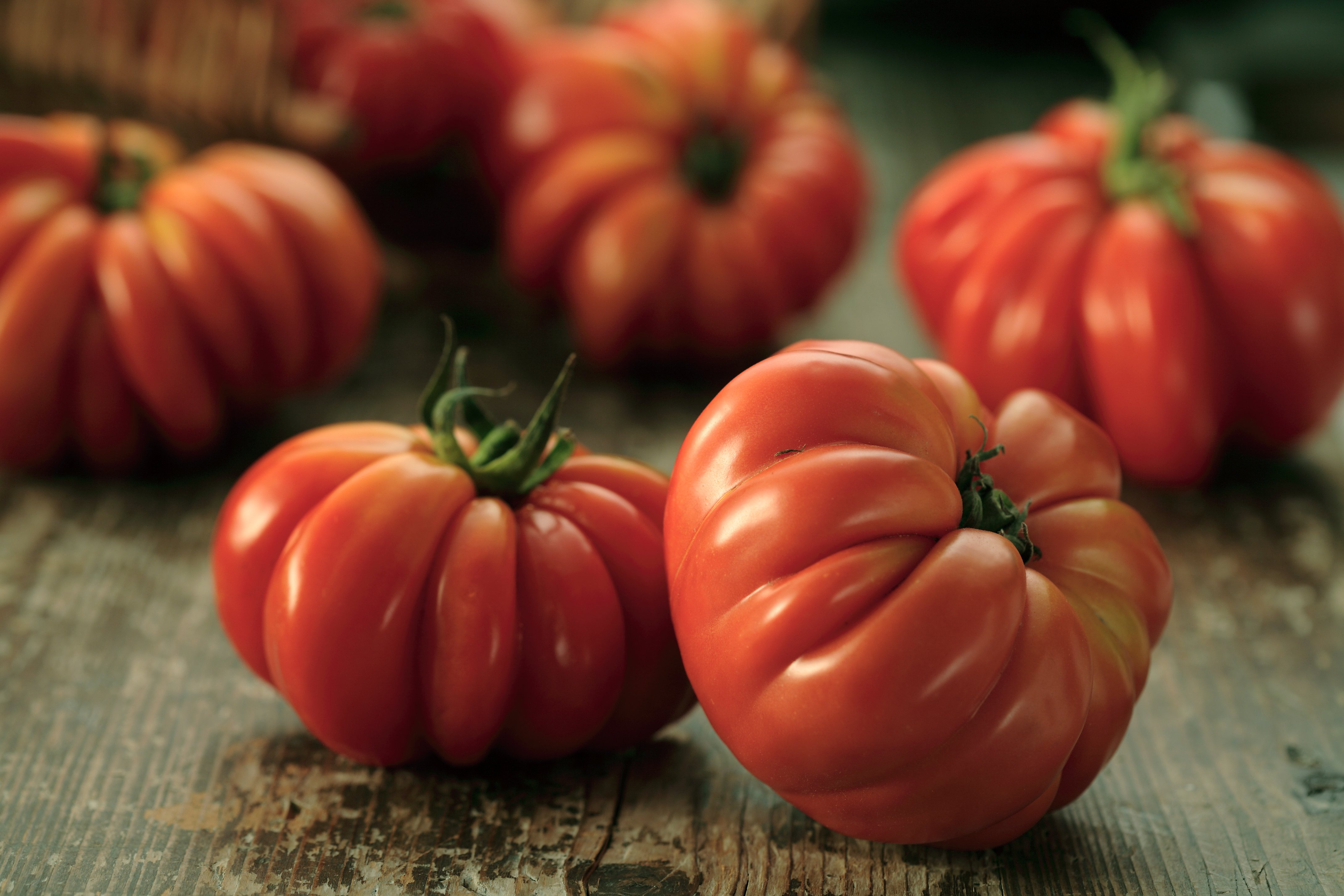
Beefsteak tomatoes are great choices when you want to learn how to grow tomatoes from seed.
- These tomatoes weigh slightly over 1 pound and have a tangy, acidic bite that is also slightly sweet.
- They are great on sandwhiches, solid for canning, and great to eat on their own.
B) Better Boy Tomatoes
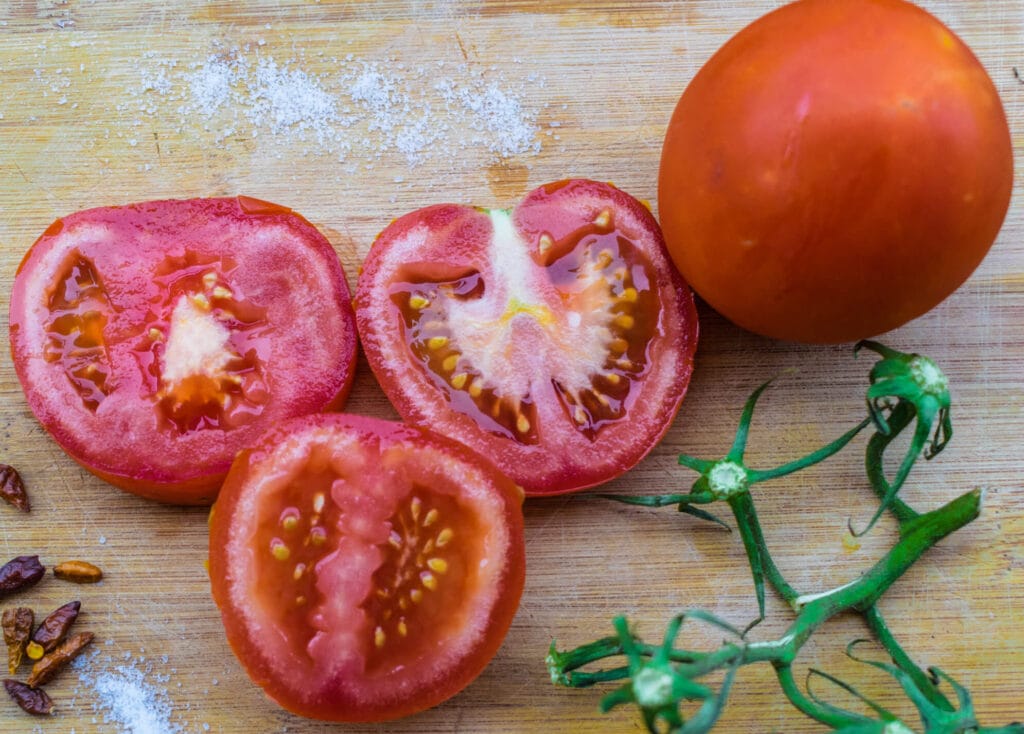
A Better Boy tomato is another tomato you are most likely going to find at your average grocery store.
- Better boy tomatoes are red, round, and sweeter than most other tomatoes.
- This is perfect for canning and produces one of the highest yields.
C) Roma Tomatoes
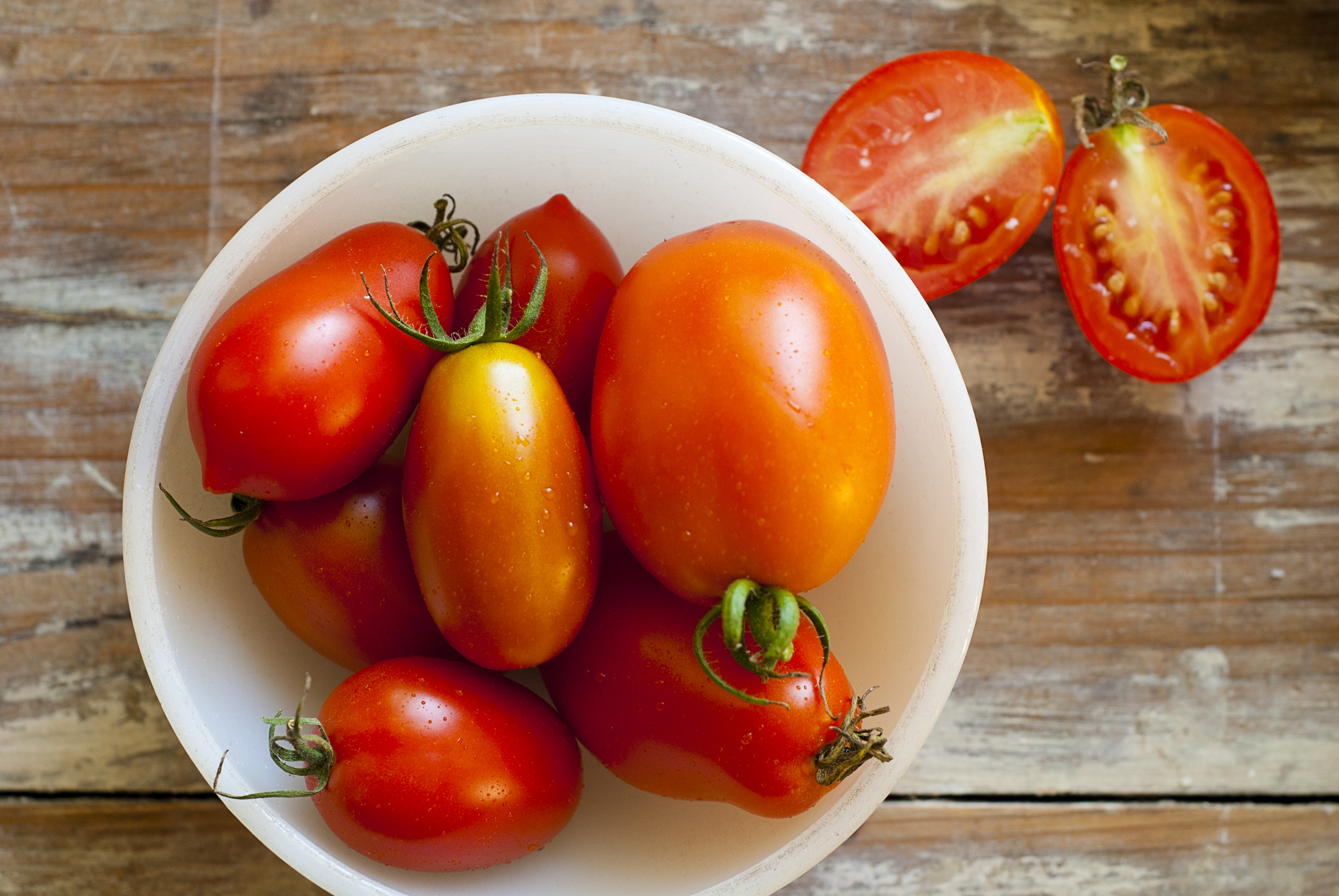
Roma tomatoes are one of the favorite tomatoes among professional cooks and restaurants.
- This type of tomato is big, sweet, acidic with a chewy flesh and low water content.
- They have a great yield, are perfect for canning, and have one of the longest storage lives out of all tomatoes.
D) Cherry Tomatoes
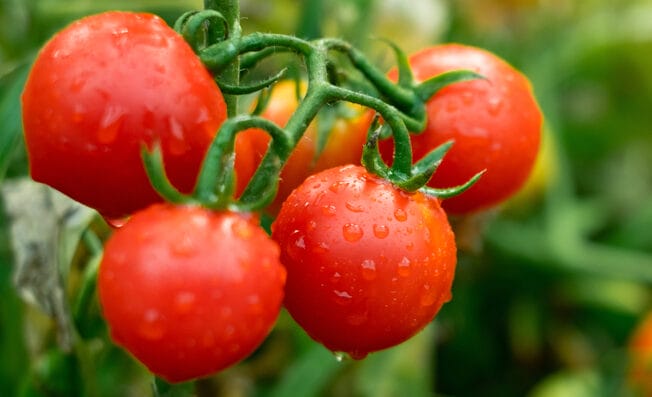
If you are a beginner gardener and trying to learn how to grow tomatoes from seed then the Cherry Tomato is your best choice.
- Cherry tomatoes are about an inch in diameter, are delicate, and are known for their sweetness.
- People use them for snacking, salads, can be used for certain type of tomato pastes.
E) Brandywine Tomatoes
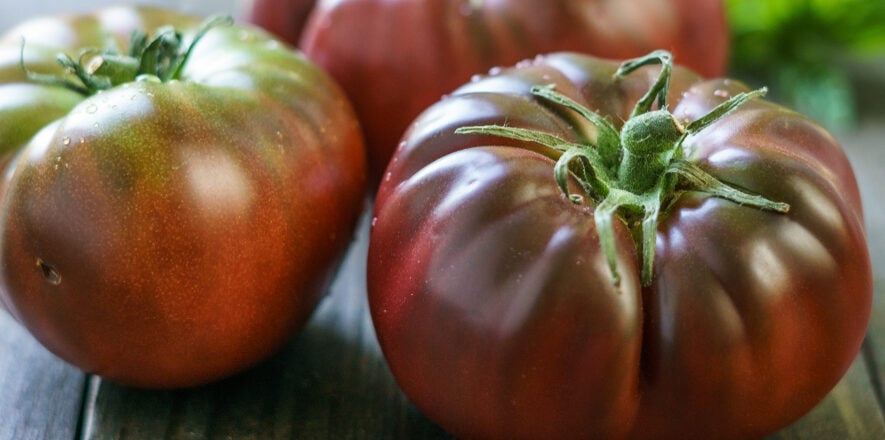
If you are looking for a way to learn how to grow tomatoes from seed then look no further than the Brandywine Tomato.
- This tomato has an intensely meaty inside with a sweet and balanced flavor
- Perfect tomato to eat with mozzarella and olive oil.
F) Green Zebra Tomatoes
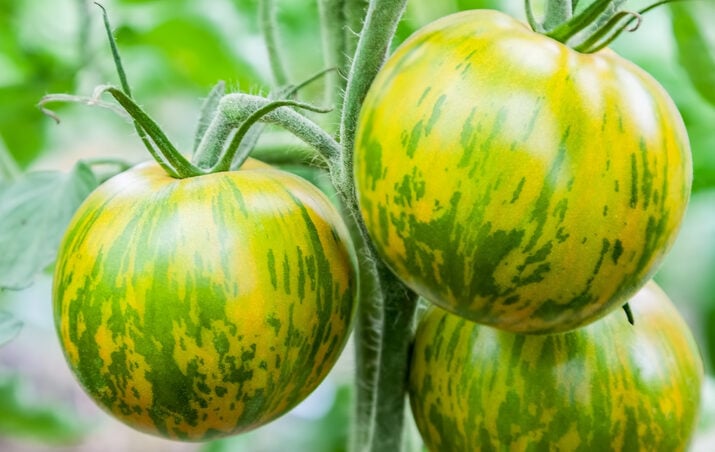
If you are looking for a more brightly acidic and tart tomato Green Zebras should be what you grow.
- Green Zebras are perfect for fried tomatoes
- These are a great tomato to plant to cross-pollinate other heirloom and organic tomatoes
G. Cherokee Purple Tomatoes
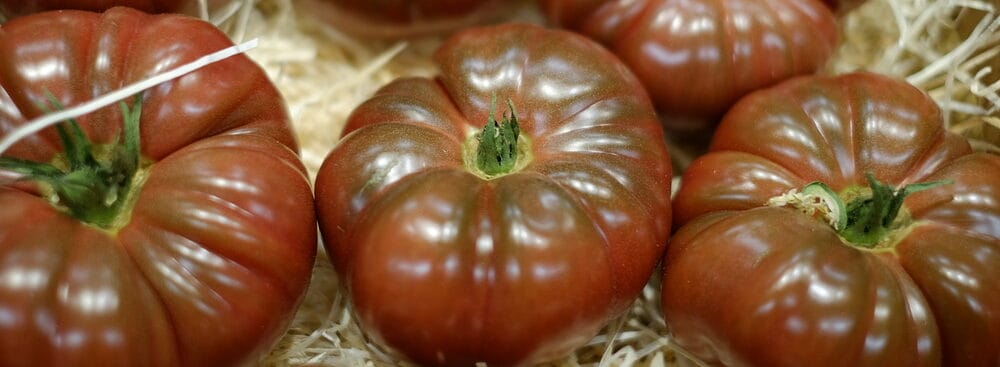
Another great way to learn how to grow tomatoes from seed is with the Cherokee Purple.
- Cherokee tomatoes are beefsteak tomatoes with a reddish, purple flesh and has a sweet-rich flavor!
- Although a slow grower with little yield, the juicy dense taste makes up for it. This is the perfect tomato for salads, BLTs, and dehydrating!
#3. What Type of Fertilizer Should I Use for My Tomatoes?
The Best type of fertilizer for tomatoes is compost.
And if you don’t have the time or ability to create compost then I recommend buying Peat Moss or Plant Food for your tomatoes.
- What I like about this product is that you only have to apply it once every 3 months and it contains natural ingredients and micronutrients that support root strength and plant development.
- In addition, the benefit of compost, peat moss, or plant food is that it will provide you tomatoes will the nitrogen that is critical to plant growth and an abudance of tomatoes.
#4. What Type of Soil Should I Use for My Tomato Plants?
If you will be keeping your tomato plants in containers all year then you will want a well-draining potting mix that provides the correct amount of nutrients like Miracle-Gro Potting Mix.
If you will be planting your tomatoes into a garden then you will want to add a nutritious garden soil mix into the ground, such as Miracle-Gro Expand N Gro.
And as an added bonus I highly recommend adding a 6-inch layer of mulch around your tomato plant (whether in the ground or in a pot) to help minimize evaporation, fungus, and diseases.
#5. How Do I Care for my Tomato Plants Once they begin growing?
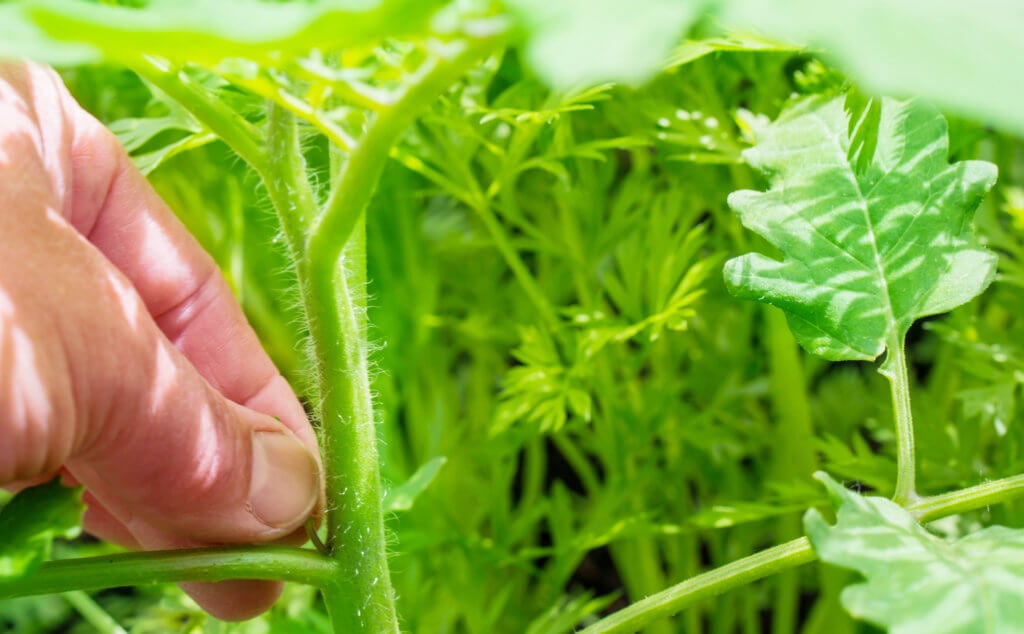
Below are caring tips for your tomatoes throughout the summer:
- Keep Your Soil Healthy – Quickly inspect your soil for fungus, harmful worms, and weeds before you plant and throughout the summer. Remove and replace it with new soil as needed.
- Mulch – Mulch around your plants with compost at the beginning of the year. Using mulch will minimize evaporation and protect your tomato plants from fungus, disease, and weather.
Related: Best Mulch for Tomatoes
- Water the soil, not the plants. By watering leaves you increase the risk of spreading fungus and other diseases. And increase the risk of evaporation.
- Remove diseased and dead plants. This is the easiest way to prevent the spread of deadly diseases. If you notice yellow spots on leaves it means you have blight fungus and will want to remove the leaves.
- Plants your tomatoes at a new spot yearly. This is key to preventing seasonal diseases and insects from attacking the same plants year in and year out.
- Prevent Insects. The best way to prevent them is through an insecticide. If you don’t want spider mites, stink bugs, or Japanese beetles ruining all your hard work I recommend purchasing Sevin Bug Killer.
- Related: How to Get Rid of Aphids on Tomatoes
#6. When do I Harvest Tomatoes?
Below, are several tips to remember when harvesting tomatoes:
- Harvest Tomatoes 8 to 12 weeks after planting.
- Leave your tomatoes on the vine as long as possible. This will allow them to ripen the most effective way and retain their flavor.
- You will want to pick your tomatoes when the whole fruit is solid red and firm. Firmly hold the fruit as the stem with one hand and the stem with another. Twist the tomatoes and gently pull away from the plant.
- If insects are eating your tomatoes before they fully ripen it is okay to pick them when they are orange colored and place on your windowsill.
- For some tomatoes, the time to harvest is right around frost. My recommendation is to harvest your tomatoes before the first frost, even if they are not fully ready. Frost will immediately kill your plants and tomatoes.


